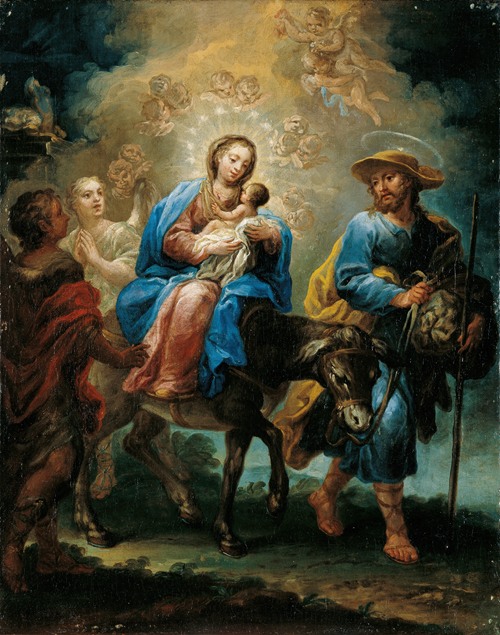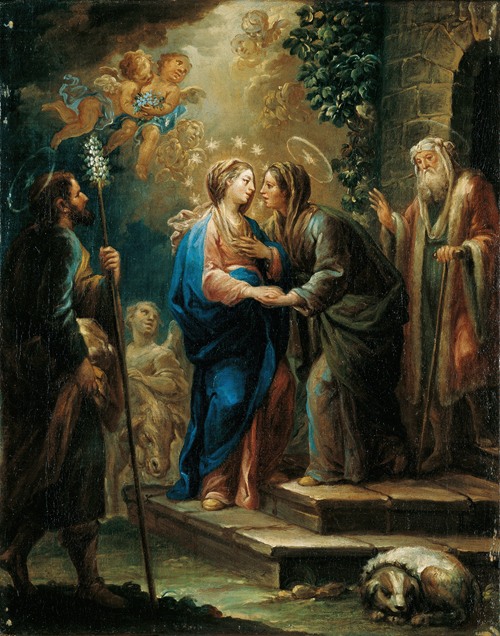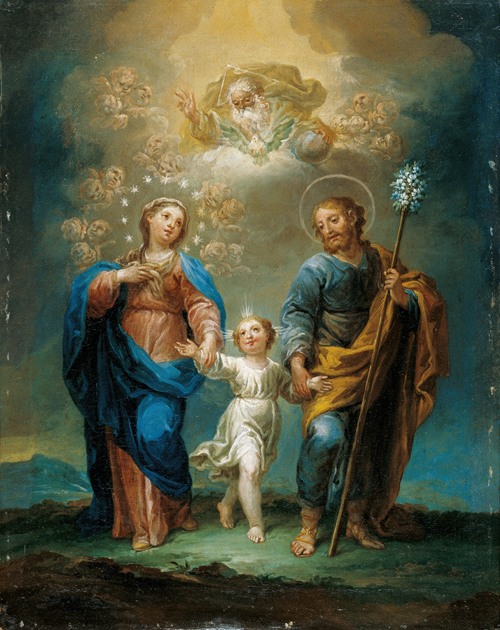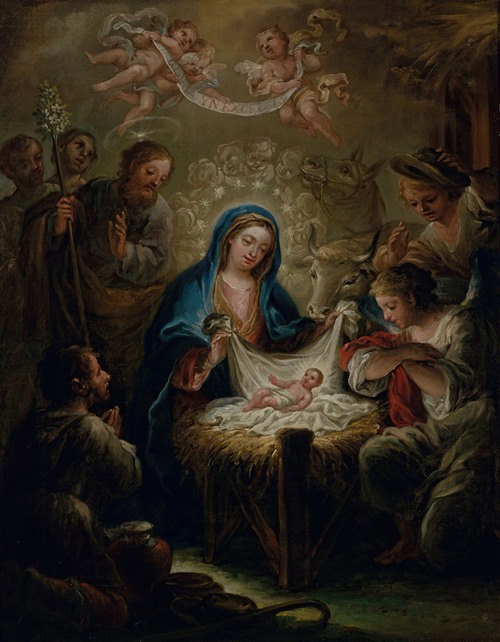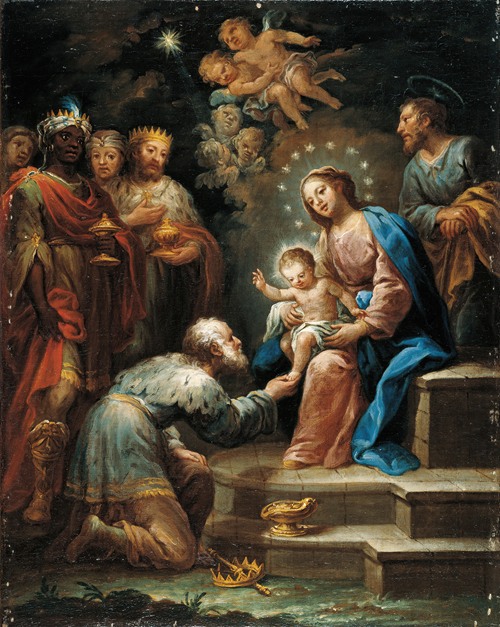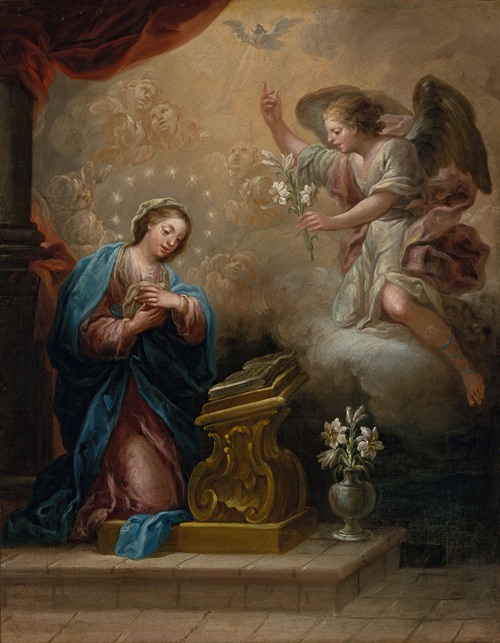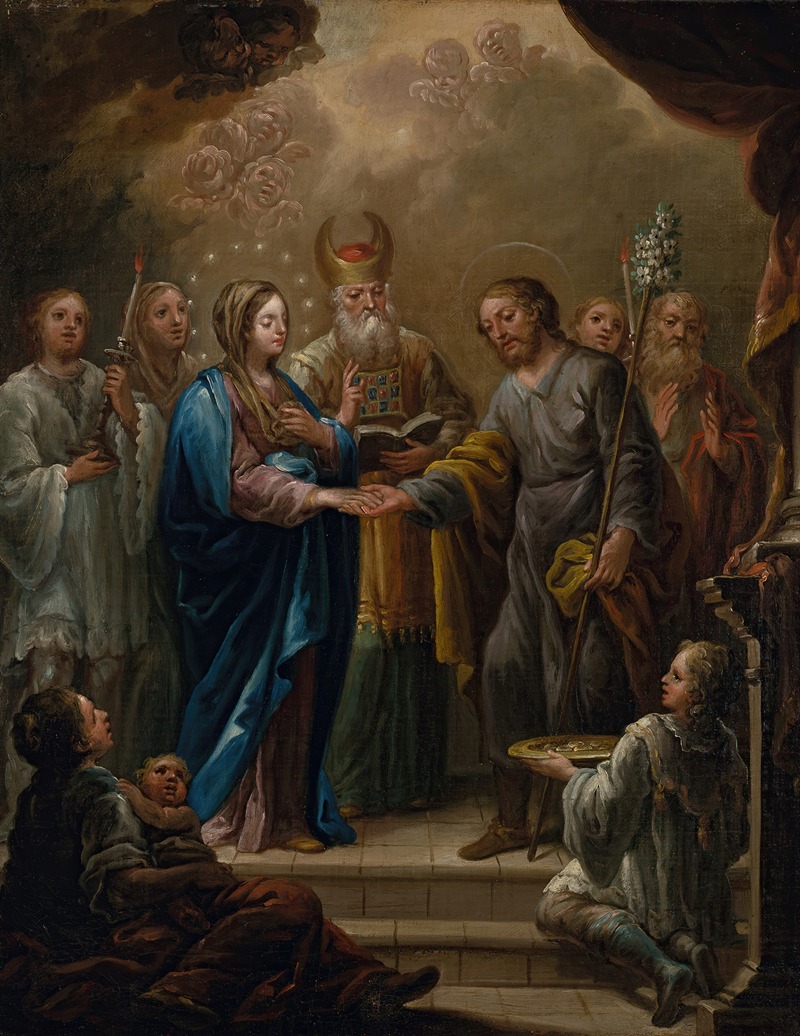
This painter is a very little known artist, who nevertheless must have had a relevant presence in Madrid's pictorial activity at the beginning of the 18th century, judging by the research published to date (Piedra 1985 and Agulló and Cobo 1987). According to his own testimony, he was born in Madrid between 1659 and 1662, and in this city he died on February 18, 1733. He was the son of an unknown Lucas de Ezquerra, originally from the town of Pomar (Burgos), alien to the world of painting, and not from the painter Domingo de Ezquerra, as has been supposed on occasion.
Although Ceán Bermúdez (1800) affirms that he was trained with Palomino, his life trajectory and his painting indicate a clear connection with Carreño. His widow left him in her will of 1686 a sword and a dagger that belonged to her husband, Clear testimony of a close personal relationship, while the artistic dependence can be seen in his Immaculate Conception of the Poor Clare Monastery of Olite (Navarra), signed in 1710, in which he faithfully follows the models created by Carreño. In 1725 he received from the Council of Castile the appointment of official appraiser of paintings, a position for which he litigated a year earlier together with other Madrid painters of the time, complaining about the monopoly exercised until then by Palomino and García de Miranda in this activity, to the one that Ezquerra was dedicated at least since 1688.
